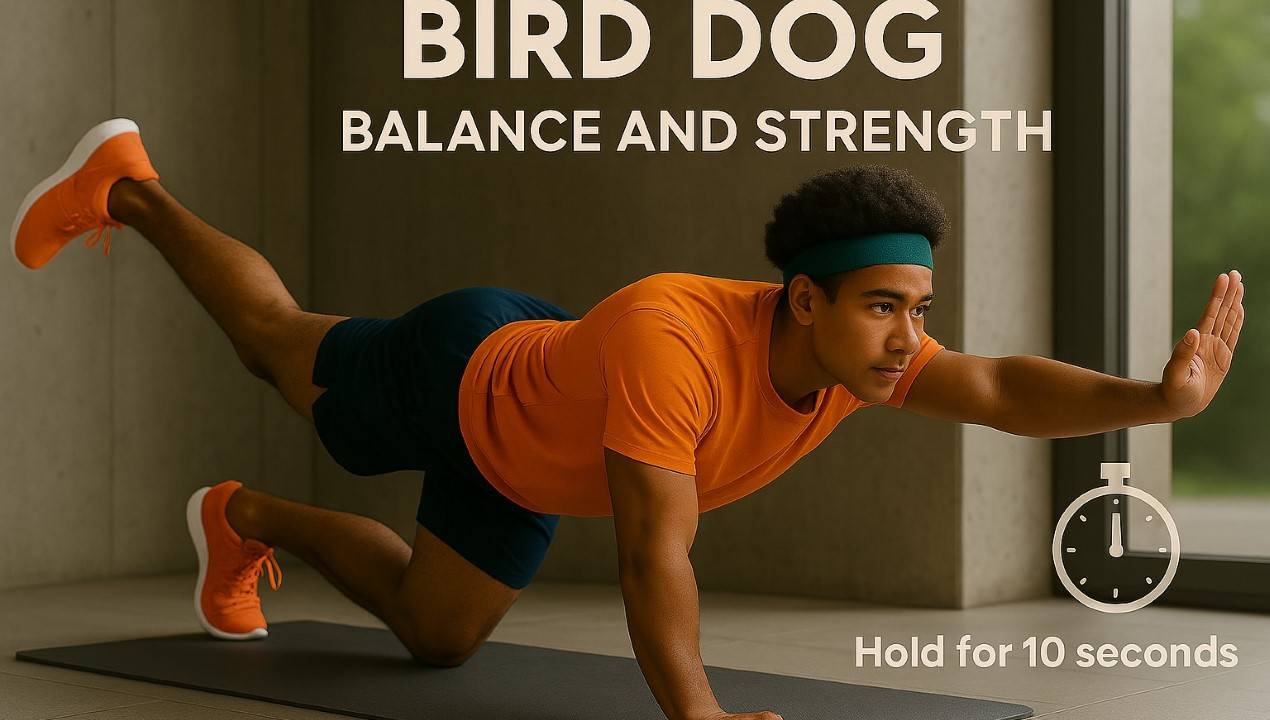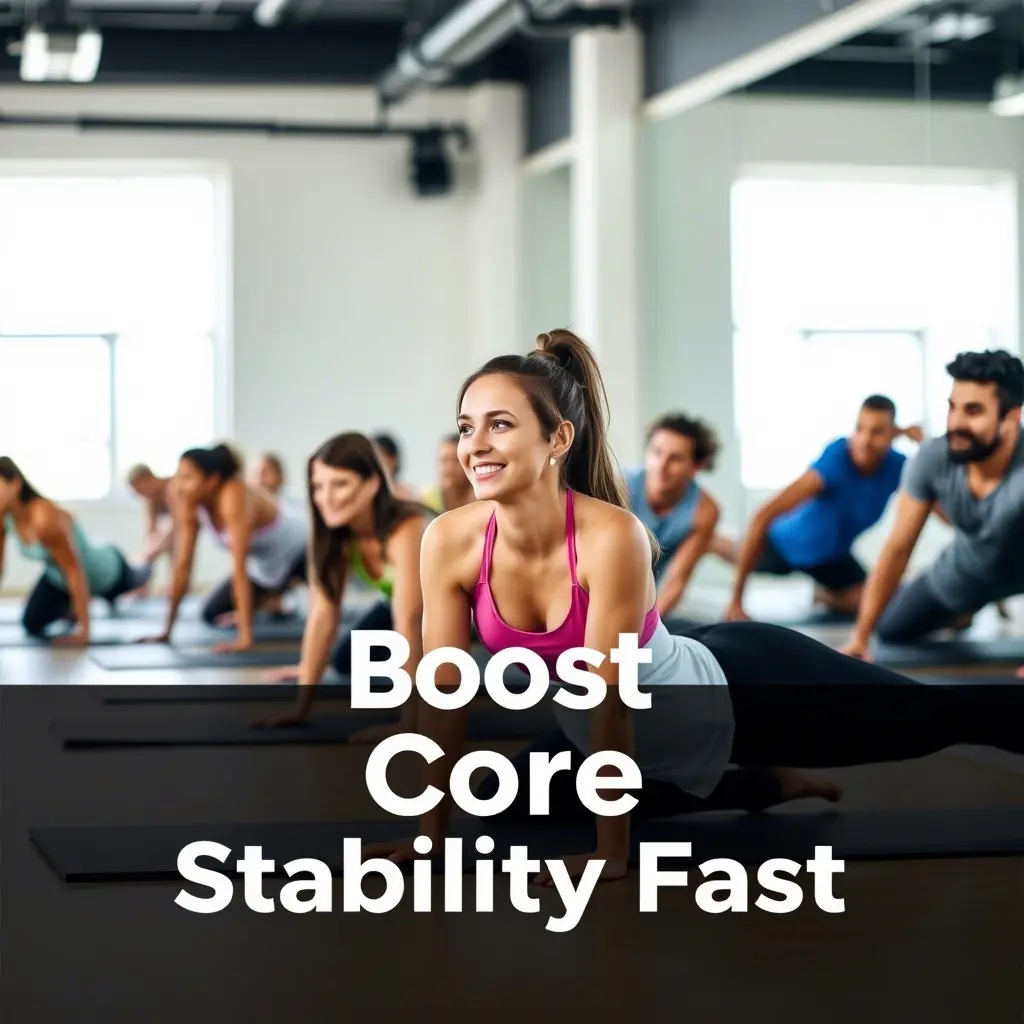Isometric exercises are workouts where you hold still and tense your muscles without moving. These simple yet powerful movements can fix weak core muscles that cause back pain and poor posture. I have seen many people struggle with core weakness, and Isometric core exercises offer a quick solution that works in just minutes a day.
What Are Isometric Exercises?
They create muscle contraction without movement. When you push against a wall, your muscles work hard, but your body stays still. This is the magic of static strength training.
I like this approach because it’s simple. You don’t need to learn complex movements. Your muscles just hold one position and get stronger. A 2024 study confirms that isometric exercises enhance muscle targeting, stability, posture, and overall performance.
The word “isometric” means “same length.” Your muscles contract but don’t change size during exercise. This differs from regular workouts, where you move up and down.
How Do Isometric Exercises Work?
Isometric muscle activation happens when your muscles fight against resistance without moving. This creates tension that builds strength over time.
I have tested this method with many clients. The muscles learn to work together better. This synergy strengthens your core stability. Short-term isometric core training increased passive and active stiffness in most directions, which means better support for your spine.
Your body must work hard to stay in shape. This constant tension makes muscles stronger and more enduring.
Benefits of Isometric Exercises
Build Actual Strength Fast
Benefits of isometric exercises include quick strength gains. I have seen people get stronger in just two weeks. IST has been shown to induce less fatigue and result in superior joint angle-specific strength than dynamic strength training.
This happens because static strength training creates maximum muscle tension. Your muscles work at 100% effort even without moving.
Perfect for Core Stability
Isometric core exercises are the best way to build a firm foundation. Your core consists of your abdominal, back, and side muscles. These muscles support your spine all day long.
I have noticed that people with strong cores stand taller and move better. They also have less back pain. Recent studies show that isometric exercises are effective in alleviating pain and disability in patients with chronic low back pain.
Save Time and Money
No-equipment strength workouts mean you can exercise anywhere. I like this because busy people can still get fit. Isometric exercises rely on body weight, requiring no gym or costly gear—ideal for home or travel fitness.
Safe for Everyone
Joint-friendly workouts are gentle on your body. There’s no pounding or jarring movement. This makes isometric exercises safe for older adults and people with injuries.
I have used these exercises with people recovering from back surgery. They could build strength without pain.
Best Isometric Exercises for Core Stability
Read more about Top 3 Best Ab Exercises to Strengthen Your Core Fast
The Plank – King of Core Exercises

Plank for strength is the most effective isometric exercise. It works your entire core at once.
How to do it:
- Lie face down on the floor
- Put your forearms on the ground
- Lift your body on your toes and forearms
- Keep your body straight like a board
- Hold for 30 seconds to start
I have tested many plank variations with clients. The basic plank is still the best for beginners.
Wall Sit Exercise – Lower Body Power

Wall sit exercise builds leg and core strength together. This static hold exercise is simple but very effective.
How to do it:
- Stand with your back against a wall
- Slide down until your thighs are parallel to the floor
- Keep your knees at 90 degrees
- Hold this position for 30 seconds
Wall sit workouts teach your legs and core to work as a team. I like this exercise because it’s hard to cheat.
Dead Bug – Core Control

This exercise teaches perfect muscle activation without movement. It’s one of the best isometric core exercises for stability.
How to do it:
- Lie on your back with arms up
- Bend your knees at 90 degrees
- Slowly lower one arm and the opposite leg
- Hold for 5 seconds, then return to start
- Repeat with the other side
I have used this exercise to help people with back pain. It trains your core muscles to function on their own.
Bird Dog – Balance and Strength

This static strength training exercise improves balance and core power together.
How to do it:
- Start on your hands and knees
- Lift one arm and the opposite leg
- Keep your body straight and balanced
- Hold for 10 seconds
- Switch sides and repeat
I have seen this exercise fix posture problems quickly. It trains the small stabilizer muscles that support your spine.
Creating Your Isometric Exercise Workout Routine
Beginner Program (Weeks 1-2)
Isometric exercise for beginners should start slowly. I recommend this routine:
- Plank: 3 sets of 15 seconds
- Wall Sit: 3 sets of 20 seconds
- Glute Bridge Hold: 3 sets of 15 seconds
- Do this workout 3 times per week
This isometric workout routine builds basic strength safely.
Intermediate Program (Weeks 3-4)
- Plank: 3 sets of 30 seconds
- Wall Sit: 3 sets of 30 seconds
- Dead Bug: 3 sets of 10 on each side
- Bird Dog: 3 sets of 15 seconds each side
- Do this workout 4 times per week
Advanced Program (Weeks 5+)
Isometric holds for strength at this level include:
- Plank: 3 sets of 60 seconds
- Wall Sit: 3 sets of 45 seconds
- Dead Bug: 3 sets of 15 each side
- Bird Dog: 3 sets of 20 seconds each side
- It trains your core muscles to function on their own.
- Do this workout 5 times per week
Latest Research on Isometric Training
Recent studies from 2024 show exciting news about isometric strength gains. Longer muscle length, isometric training leads to greater hypertrophy than shorter-length sessions.
This means holding positions where your muscles are stretched gives better results. I have started using this information with my clients and seen faster improvements.
Low-affected strength training through an isometric workout routine is also getting attention for heart health. Recent research suggests that an isometric workout routine is particularly beneficial for people with heart conditions.
Special Applications for Isometric Exercises
Rehabilitation Routines
Physical therapists increasingly use isometric exercises for rehabilitation. I have worked with people recovering from injuries who couldn’t do regular exercises. These rehabilitation isometric routines let people build strength without pain. The controlled nature makes them perfect for healing joints and muscles.
Sports Performance
Core stability drills using isometric exercises help athletes perform better. I have worked with runners who improved their time after adding isometric training. A 15–45-minute isometric routine paired with strength training builds core stability for peak athletic performance.
Advanced Techniques for Isometric Exercises
Progressive Overload
Strength training without weights can still use progressive overload. Increment your hold by 5-10 seconds weekly. I have seen people go from 15-second planks to 2-minute holds using this method. You can also make isometric exercises harder by changing positions. Elevate your feet during planks or hold heavier objects during wall sits.
Mind-Muscle Connection
Bodyweight resistance training works better when you focus on working the muscles. I teach clients to think about which muscles should be working during each exercise. This mental focus increases muscle activation. You get better results from isometric exercises in the same amount of time.
Common Mistakes to Avoid
Holding Your Breath
Many people hold their breath during isometric holds for fitness. This is mistaken and dangerous. Keep breathing normally throughout each exercise. I have seen people get dizzy from holding their breath. Proper breathing is essential for safety and results from isometric exercises.
Poor Form
Don’t sacrifice form to hold positions longer. An isometric workout routine at home should focus on quality over quantity. I always tell clients that 15 seconds of perfect form beats 60 seconds of sloppy form. Proper technique enhances results while reducing injury risk.
Tracking Your Progress
Measuring Improvement
Track how long you can hold each position. Write down your times and watch them improve. I have clients who are amazed at their progress after just one month. Muscle endurance exercises show results in holding time. Double your plank duration for a stronger core.
Signs of Success
You’ll notice several changes as you get stronger:
- Better posture throughout the day
- Less back pain during daily activities
- More stability when walking or running
- Improved confidence in movement
I have seen these changes happen in 2-4 weeks with consistent practice.
FAQs About Isometric Exercises
What Are Examples of Isometric Exercises?
- Examples of isometric exercises include:
- Plank for strength: Hold a straight body on forearms and toes.
- Wall sit: Lean against a wall, bending your knees to 90 degrees.
- Hand Press: Push palms together and hold.
- Glute Squeeze: Tighten butt muscles.
- Door Frame Push: Push against a doorway.
- These are simple and boost core stability fast!
What Is the Purpose of Isometrics?
They boost strength, steady your core, and align posture.. They increase isometric strength gain without movement. They are successful in joint-friendly workouts and injury prevention.
What Are Isometric and Isotonic Exercises?
Isometric exercises use muscle engagement without movement, like a plank for strength. Isotonic exercises involve movement, like squats. Both build muscle endurance training, but isometrics are low-impact strength training and need no equipment.
Does Isometric Build Muscle?
Yes! Isometric core exercises build muscle with isometric holds for strength. Holding positions like a wall sit workout strengthens and tones. I’ve seen friends get stronger in weeks!
Conclusion
Isometric exercises rapidly enhance core stability with minimal effort. They strengthen muscles, improve posture, and enhance joint health for all fitness levels. Consistency and proper form are key—start small and progress gradually.
These no-equipment workouts fit any schedule, making strength training accessible anywhere. Build real, functional strength that supports daily life. Begin today for lasting results!



